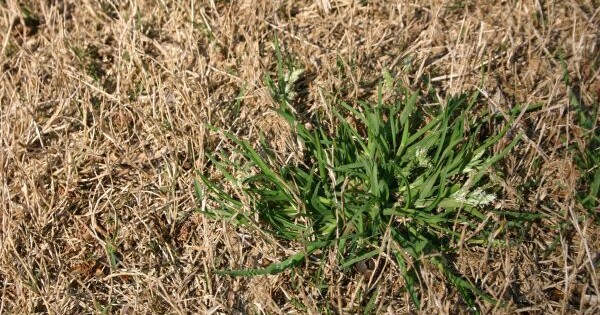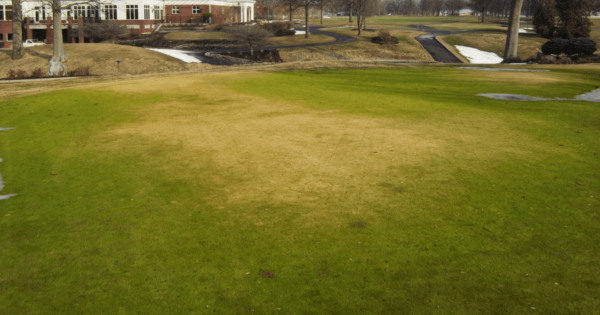BEWARE-Hot, wet, stinky soils leads to summer turf decline
Hot, wet soils leading to turf stress and decline
The phrase often goes at this time of year… “Summertime and the living is easy…”. For many golf course superintendents and turf managers, this might be true, but if you have been affected by recent heavy rains and/or regular rains during these first several “true weeks” of summer there is nothing easy in the near future. Heavy rain combined with a few other recent “soakers”, and temperatures to remain in the low-90’s spells S-T-R-E-S-S! And it’s not just the golf course grounds that they’re going to be stressing over either; heavy rains can take their toll on clubhouses. If guttering becomes clogged by debris like leaves and twigs in high winds, heavy rain can make for a potentially disastrous combination. Water damage can cause irreparable damage if not handled quickly and accurately. Fortunately, along with the correct service, there is a range of suitable products such as sealants and adhesives that could aid with repairs. Blockages can lead to water damage to roofing and inner walls if left unaddressed; using services like Clean Pro Gutter Cleaning Kansas City can assist with this dilemma and can also improve the overall appearance of the clubhouse exterior too.
[Tweet “It’s not about what’s on with the turf leaves, but what is happening with the soil. @BIGturfteaching”]
While summertime means a vacation for many, for golf course superintendents or turf managers caring for cool-season grasses and in charge of managing an economically important turf summer can certainly be stressful. You might ask, why? The turf still has the appearance of being green and healthy… The truth, however, is it’s not all about what is happening to the turf leaves, but rather what is (or is not) going on beneath the ground with the plant’s root system.
High Temperature Stress
Dr. Jack Fry’s research group at Kansas State carefully studied the effects of high temperatures and high soil moisture on the seasonal decline of the cool-season grass (creeping bentgrass) root systems (Huang et al., 1998). This group or researchers found that the combination of these two factors and the negative effects on the turf’s physiological activity were potentially lethal. Roots will shorten, and darken in color as soil temperatures rise and the decline naturally occurs as the summer progresses and will continue until the cool, moist conditions resume in autumn. Their results would also be applicable to other cool-season grasses like Kentucky bluegrass. The key, however, is how to manage the turf during this period of decline.
Checkout: Down and Dirty Series
For many years this condition was simply referred to as “Summer Decline” and many speculated on the true reasons for decline. Is it disease?, abiotic stress? or a combination of both?
The decline that is observed in Maryland during mid-to-late summer appears to be a combination of abiotic stresses including one or more of the following: high temperature, high humidity, shade, excess soil wetness, or mechanical damage for mowing too low or grooming during hot weather when the turf is not actively growing. – Dr. Peter Dernoeden
In his book “Creeping Bentgrass Management“, he provides a nice section that expands upon Dr. Fry/Huang’s thoughts and adds some practical context to the summer decline problem (Dernoeden, 2013). He outlines some of the negative effects of saturated or nearly saturated soil conditions in summer and suggests that the effects can be even worse where any excessive traffic or mechanical damage occurs (e.g. Don’t shoot yourself in the foot!). The book also discusses a phenomenon called “scald”. In other words, the decline of turf due to the effects of high temperatures and prolonged warm standing water at the surface.

1. Golf green with standing water: Avoid prolonged standing water in the summer months, this may lead to “scald” and turf decline. Removing the water with a squeegee or other device will be helpful and avoid traffic in these areas.

1. Wet soil with thermometer: Cool-season turf roots naturally decline in the summer. High summer rootzone temperatures combined with wet or saturated soils can create even worse situations for turf root decline.
Black Layer
There is a description about “black-layer” or what happens if soils/rootzones stay wet or poorly drained for long periods of time. If the rootzone pore-space stays mostly saturated it can become anaerobic (lacking oxygen) and this compounds the turf’s physiological problems. In some situations the underlying soil may take on bands of that have a blackish appearance and upon close inspection smell like rotten eggs. Black-layer and is not at all a desirable soil condition for growing and maintaining a healthy root system. The take home message here in simple terms is to do whatever you can to avoid what we affectionately refer to as “HOT, WET, STINKY soils.”
What can you do?
In addition to the phrase “You better check yourself, before your wreck yourself!” (e.g. don’t get too crazy with ultra-low mowing heights, excessive mowing frequency, rolling, or sand topdressing). The fundamentals of DRAINAGE, DRAINAGE and gas exchange are key to turf survival! In other words anything that helps the turf “breathe” will be a benefit. You must take on board this same advice when dealing with your backyard. Think of it this way, if the water isn’t drained away properly, then it could have a detrimental impact on how your grass looks, as well as its functionality and the same applies to the golf course. When it comes to your own garden, it should be a relatively easy fix as you could decide to install a french drain or something similar to help the excess water drain away properly. For the turf survival on the green, there are other things that can be done to resolve the problem in an orderly fashion. If you cannot deal with internal drainage then the next best thing is avoid issues with standing water (squeegee it off, pump it away, then implement programs that involve cultivation equipment that allows for soil venting, this may include equipment like solid tines, needle tines or devices like the DryJect. Remember, heavy equipment should only be put upon the turf “if” the soil is relatively dry and the turf can withstand the weight of the machines. In some situations, it may be better to hand cultivate (forking, etc.) rather than use a machine. If you cannot deal with the internal drainage at the moment, it may be useful to take images, map them and put the area on a plan for future additions of internal drainage at a later time (tile, etc.). Lastly, the use of temporary fans for surface air-movement and plant protectants may also be part of any summer management program in difficult micro-environments. That discussion, however, can be saved for another day.
Read Also: Cool Ways to Access Soil Information
At the end of the day, choose your management strategy wisely, paying particular attention to poorly drained soils and also the potential for mechanical damage when turf is trafficked. Lastly, before you get too crazy with a management practice think twice! There is nothing worse than causing mechanical damage to stressed turf that you know later that you could have prevented.
In the meantime, as Dr. Fidanza says… #HitIt !!! Wishing you all the best for the rest of this turf season.
References
Dernoeden, Peter H. 2013. Creeping Bentgrass Management. 2nd. ed. CRC Press, Boca Raton, FL.
Huang, B., X. Liu, and J. D. Fry. 1998. Effects of high temperature and poor soil aeration on root growth and viability of creeping bentgrass. Crop Science 38:1618-1622.


